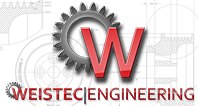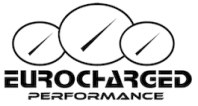Results 1 to 5 of 5
-
08-14-2017, 04:28 PM #1
Bigger isn't always better - Comparing ESS-Tuning's TS-800 2.9 Whipple & VF-Engineering's Eaton TVS2300 Lamborghini Huracan supercharger kit efficiency & output
It is an easy trap to fall into in the automotive world. Bigger is better, right? Bigger turbochargers, bigger superchargers, bigger compressors, and bigger power. The thing is, an engine is basically just an air pump and what you want is to compliment it so it runs as efficiently as possible.

That does not always mean a bigger turbo or bigger supercharger or even more boost is better for it. There are efficiency ranges and points of diminishing return. This is illustrated well with the two Huracan 5.2 liter V10 supercharger kits on the market.
As we detailed previously, VF-Engineering chose an Eaton TVS2300 based unit and ESS-Tuning chose (or was forced) to use a 2.9 liter whipple twin screw. It is not hard to deduce 2.9 liters is bigger than 2.3 liters.
What is important to focus on however is the range the compressor will be operating at. Considering these are pump gas kits we are not talking about spinning them to the max and double digit boost. VF-Engineering runs their VF-800 kit at 7.5 psi and ESS advertises 7-8 psi so a similar range.
Why is this important? Because at this lower boost level the TVS roots blower has the efficiency advantage. The 2.9 liter Whipple will not show an advantage until 14+ psi or so.
Don't believe it? Well, let's take a look at the numbers. Dyno plots are not easy to come by for these but ESS-Tuning posted this Huracan graph:

Now, these figures are not utilizing US standards. Horsepower is given in DIN and torque is in newton-meters. The figures convert to about 670 wheel horsepower and 470 lb-ft of torque at the wheels.
Let's look at independent, not VF provided, dyno figures for the VF-800 kit at 7.5 psi of boost on the Huracan:

Peak horsepower is close but the VF-Engineering torque figure is higher by 45 lb-ft of torque at the wheels. We wish we had the full graph to go on but essentially the VF-800 kit at the same boost level is providing an advantage in area under the curve because it is working more efficiently.
For those who want to look a the compressor map, here it is:
Eaton TVS2300:

The problem with Whipple is they do not publish compressor maps. However, here is a Lysholm twin 2.3 liter twin screw:

Now a Lysholm 3.3 liter twin screw:

Not a perfect comparison by any means but as close as we can get with the data provided. Let's look at an overlay of the Eaton TVS2300 and the Lysholm 2.3 liter maps:

Here is a very good explanation of what you are seeing:
On the 5.2 liter Huracan and Audi R8 5.2 V10 the TVS2300 is operating closer to its sweet spot in terms of maximum efficiency than the Whipple 2.9 liter with the supplied pulleys. This is not an opinion. This is not a belief. This is a scientific fact.You don't have to be an engineer to see what these charts mean...the left vertical axis is boost. It is expressed in pressure ratio. We know that sea-level standard pressure on a standard day is 14.7 PSI (If you really care, that is also at 59 degrees F / 15C at 1013.2 millibars of pressure and 29.92 inches of mercury).
The formula for converting boost in PSI to P/R is (14.7 + PSI)/14.7 - P/R
So at 18 PSI your pressure ratio should be (14.7 + 18) / 14.7 = 2.22
Zero boost would be a pressure ratio of 1.0 or atmospheric pressure (14.7).
No need to understand that since I am about to add a boost chart on the right axis for you...
The bottom axis is the amount of airflow through the supercharger.
See the "rings" and the "islands"? These are supercharger efficiency maps. The little "islands" are showing how efficient the supercharger is at a given pressure ratio and flow rate. The smallest little island is the supercharger's "sweet spot" where it is most efficient.
You can compare two different superchargers by comparing these efficiency maps.
What does it mean to me? It means the TVS is more efficient design until we exceed about 16 PSI. Why? Let's continue...
Let's take the very best the 2.3 Lysholm twin screw can do...and that is its "efficiency island" which is at a BLOWER RPM of 8,000 and 10-13 PSI of boost - it is at 65%.
The TVS, at the EXACT same location has an efficiency of 67-68%, and the TVS is spinning at 12,000 blower RPM. Advantage TVS by 2-3%.
What if we go the the TVS sweet spot? That is at 9,500 TVS blower RPM and 9 PSI of boost, and is 72%. How is the twin-screw doing at that point? It is spinning at 6,600 RPM, making the exact same boost, but its efficiency is only 64% - so an 8% difference favoring the TVS.
Where does the twin-screw have an advantage? Look at 16 PSI at 2200 M3/MIN...the TVS efficiency is at 61%, and the twin-screw is at 62%...so above 16PSI the advantage shifts to the twin-screw. At 18 PSI @ 2400 M3/MIN the TVS is 58% efficient - and the twin-screw is at 62% (actually off the twin-screw chart, but we can interpolate).
But if we level the playing field (as I have done here in my comparison) or, if Eaton were to build a 2.8 liter TVS to go against KB's 2.8 liter twin-screw :yes I personally think the TVS will prove to be more efficient design until you get into boost exceeding 16 PSI (as I have shown above)...but even respecting the twin-screws advantage at higher boost levels above 16 PSI, taken as a whole I think the TVS will still have more "area under the curve" if you will and be overall superior to the twin-screw design.
The TVS is far more efficient vs. this particular twin-screw than I initially thought...
Now, with the upcoming VF-900 kits we will see a jump in performance and the TVS2300 will still be operating well within its efficiency range before being pushed out of it.
To really see what the Whipple 2.9 is capable of on the 5.2 V10 platform it needs to be spun higher at 15+ psi at which point you will want a built motor and upgraded fuel system. One would need to look into transmission upgrades at that point as well and we have yet to see any working high boost twin screw system on the platform.
If you just want to install a supercharger kit and have maximum efficiency in a reliable package, it sure looks like the TVS2300 is the way to go.BRAND NEW IN BOX 991.2 standard/non-pse SPW cat bypass pipe for sale - $899 shipped
New generic 991.2 PSE bypass pipes - $499 shipped
-
08-14-2017, 08:35 PM #2
Great post. Pressure ratio and operating points need to be plotted and compared, while not as complicated as turbo sizing, people over look the importance of matching an SC to the engine. . The TVS-R 1900 / 2300 large frame superchargers are wonderful reliable and monster power units.
-
08-15-2017, 08:06 AM #3
BRAND NEW IN BOX 991.2 standard/non-pse SPW cat bypass pipe for sale - $899 shipped
New generic 991.2 PSE bypass pipes - $499 shipped
-
08-15-2017, 11:55 AM #4
 Timeout
Timeout

- Join Date
- Apr 2014
- Location
- ATL
- Posts
- 3,192
- Rep Points
- 2.1
- Mentioned
- 18 Post(s)
- Rep Power
- 0
Good info and definitely correct.
Also the rule of thumb to size a PD supercharger is you take your engine displacement and cut it in half and you want a little less than that amount of blower displacement.
The 2900 is a little oversized especially for this boost level. Like you said the TVS has higher efficiency at lower PR but also the smaller TVS should have less parasitic loss and less inertia to turn the rotors.
-
08-15-2017, 11:57 AM #5
That's what people say but it really depends on the motor. This is a very efficient 5.2 V10 that revs almost to 9k. Very different volumetric efficiency.
Plus, the whipple and roots make their boost in different ways. Both positive displacement but different rotor designs.BRAND NEW IN BOX 991.2 standard/non-pse SPW cat bypass pipe for sale - $899 shipped
New generic 991.2 PSE bypass pipes - $499 shipped









 Quote
Quote











Welcome to a...
mask is now here!